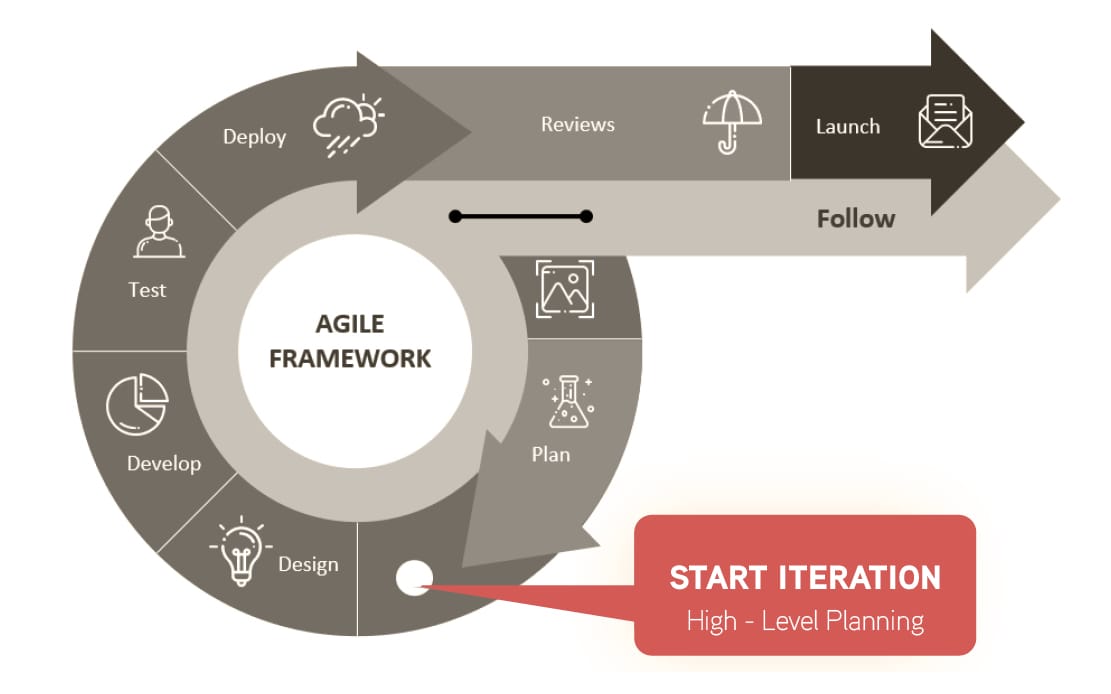SAFE: MULTIPLY THE POWER OF AGILITY

The SAFe (Scaled Agile Framework) methodology is a popular approach for managing complex software projects in businesses. Designed to extend Agile principles at the organizational level, SAFe aims to address challenges related to coordinating multiple teams while maintaining the agility and responsiveness that characterize Agile methodologies.
Concept
SAFe is a methodological framework that combines Agile, Lean, and DevOps concepts to create a coherent and adaptable approach for managing large programs. Its main goal is to enable complex organizations to remain flexible while managing multiple development teams in a coordinated way. SAFe provides a structure for organizing teams, managing workflows, and delivering high-quality products, all while maintaining visibility and strategic alignment across the organization.
Key Features
- Alignment: SAFe ensures alignment between the different levels of the organization, from team development to the executive level. This ensures that everyone is working towards the same strategic objectives.
- Transparency: The framework emphasizes transparency through mechanisms like synchronization meetings and visual management tools, which help identify problems early and resolve them quickly.
- Built-in Quality: SAFe emphasizes quality from the start, integrating best practices to ensure that the final product meets the required quality standards.
- Continuous Delivery: By adopting Lean and DevOps practices, SAFe encourages continuous value delivery to customers with frequent iterations and ongoing improvements.
- Lean-Agile Leadership: Training leaders to think and act in an Agile way is a core component of the SAFe framework. This includes the ability to make quick decisions and adapt to change.
How it Works
SAFe is organized around four main levels, each with its own set of processes and specific roles:
- Portfolio: At the portfolio level, the focus is on the strategic management of investments and project governance. Epics, which are large initiatives, are defined and prioritized based on the value they bring to the organization.
- Large Solution: This level is used in organizations where multiple value delivery trains (Agile Release Trains or ARTs) need to be coordinated to deliver highly complex solutions. It includes roles such as the Solution Train Engineer.
- Program: At this level, teams are organized into ARTs, which are teams of Agile teams. An ART typically consists of 5 to 12 Agile teams working together to deliver a product increment every 8 to 12 weeks. Ceremonies like PI Planning (Program Increment Planning) help synchronize the work of different teams.
- Team: At the team level, SAFe adopts traditional Agile practices such as Scrum or Kanban, with autonomous teams managing their own backlogs and delivering product increments in 2 to 4-week iterations.
Application in Software Project Management
The application of SAFe in software project management helps address several common challenges in large enterprises, including:
- Team Coordination: By applying a common methodology across all teams, SAFe facilitates communication and coordination, reducing information silos.
- Risk Management: With its increased transparency and regular iterations, SAFe helps identify risks early and address them proactively.
- Continuous Improvement: Through constant feedback integration and re-evaluation of priorities at each PI Planning, SAFe fosters continuous improvement of processes and products.
- Adaptability: In a constantly changing environment, SAFe enables businesses to quickly adapt to market or technology changes while staying on track with their strategic objectives.
Conclusion
SAFe is a powerful methodological framework that allows large organizations to reconcile the benefits of agility with the needs of large-scale management. By applying Lean-Agile principles at all levels of the organization, SAFe helps improve product quality, reduce delivery times, and align development efforts with the company's strategic goals. It is an approach particularly suited for complex software projects where multiple teams need to work together in a coordinated and efficient manner.
